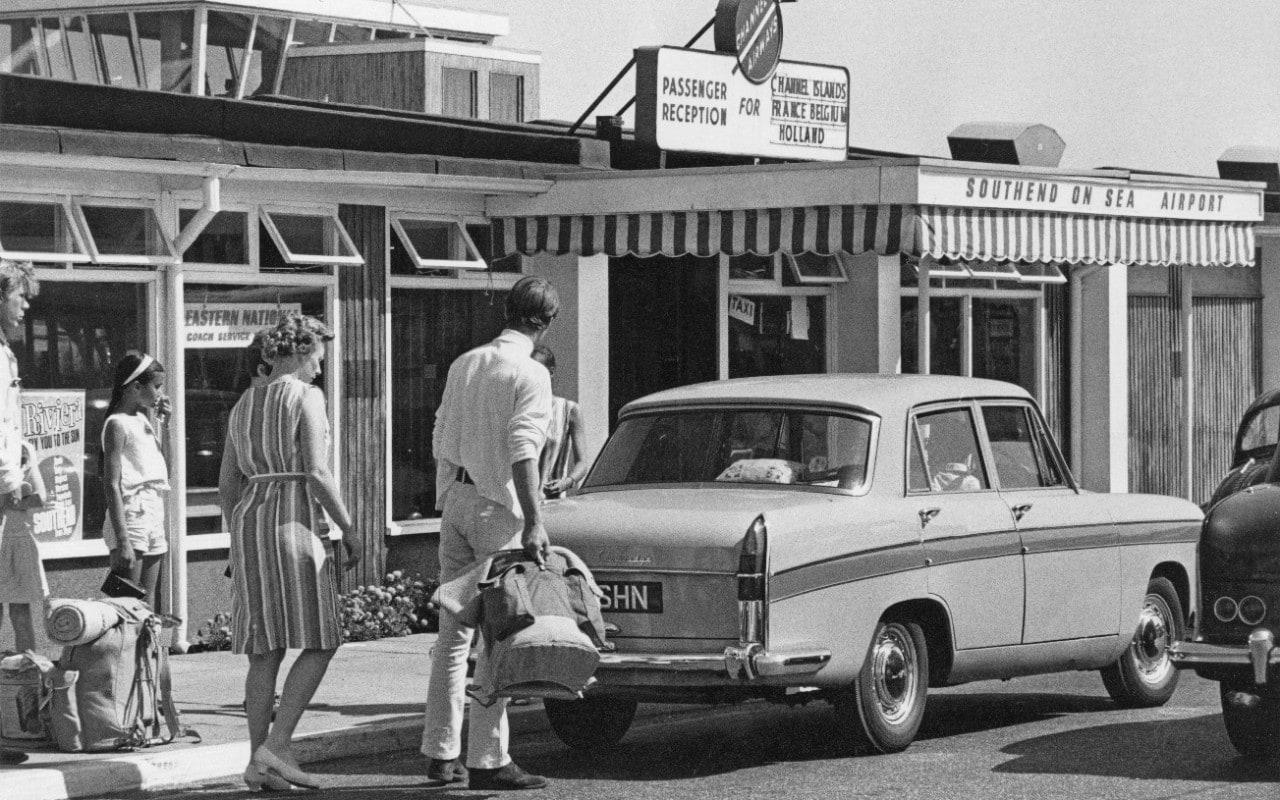The reaction from my friends last year when I suggested kicking off a week of cycling in northern Italy with a flight from Southend was a curious combination of fear and loathing.
“This is simply unacceptable,” one messaged me, despite being shown that the cheapest way to reach Milan was - by some distance - a Flybe service from the no-nonsense Essex seaside town.
I was tempted to overrule him, if only to enjoy the sight of fashion capital Milan and kiss-me-quick Southend-on-Sea sharing the same boarding pass. Was there ever a more contrasting pair of towns?
I protested that the airport is just 45 minutes by train from Stratford, or 52 minutes from London Liverpool Street, but to no avail. We ended up flying from Luton.
All of which suggests there is still a lurking suspicion among folk in the capital about escaping the UK via “London” Southend. But it can’t be universal. Southend is the fastest growing airport in the country – and this week rolled out the red carpet for its newest airline: the low-cost behemoth that is Ryanair.
The only way is up
According to data supplied by aviation analysts OAG, Southend is scheduled to welcome up to 917,866 passengers during the 2019 “summer season” (March to October). That’s a 30.9 per cent increase on 2018’s figure of 701,232. If you discount the UK’s smallest airports (the likes of Foula, Papa Stour and Carlisle – which is due to receive commercial passengers for the first time in 25 years this summer), Southend’s growth is unsurpassed.
The arrival of Ryanair has played a big part – and bodes well for the airport’s long-term future. The Irish airline, as of April 2, will base three jets at Southend, offering flights to 14 destinations: Alicante, Barcelona Reus, Bilbao, Brest, Copenhagen, Corfu, Cluj, Dublin, Faro, Kosice, Malaga, Milan Bergamo, Palma and Venice.
It’s an interesting move given the close proximity between Southend and Stansted, Ryanair’s main UK base, which is also served by trains from Liverpool Street.
As the table below shows, Doncaster-Sheffield, Bournemouth and Exeter are also looking forward to a summer of strong growth.
Last year was an equally impressive one for Southend. It welcomed almost 1.5 million passengers in 2018 – up 35 per cent from the 1.1 million it handled the previous year. The airport’s owner, Stobart Group, hopes to raise that figure to more than 2 million by 2020, taking full advantage of congestion at other airports in south-east England and the ongoing saga over Heathrow’s third runway. It really is flying high, especially when one remembers that as recently as 2010 it was virtually idle.
Call it a comeback
Southend has some way to go before challenging the capital’s other big players. Even if it hits 2 million passengers by 2020 it will only be London’s sixth busiest airport (out of seven, if you’re inclined to count “London” Oxford), and 18th across the whole of the UK.
During the Sixties, however, Southend was actually Britain’s third busiest hub, behind only Heathrow and Manchester.
During that heyday it handled nearly 700,000 passengers a year to destinations including Paris, Ostende, Rotterdam and the Channel Islands, but competition from cross-Channel ferry services and the growth of Stansted and Luton airports ushered in its rapid decline.
The seeds of its revival were sown in 2008, when it was bought for £21m by the Stobart Group, which then spent more than £100 million regenerating it. EasyJet began services from Southend in 2012; Flybe joined soon after.
It’s actually London’s best airport
That’s right. The readers of consumer magazine Which? have rated Southend as the capital’s best airport for four consecutive years. In its 2018 poll - which examined eight categories including baggage reclaim, seating, toilets, queues at security and passport control - it achieved an overall score of 84 per cent, putting it behind only Doncaster-Sheffield among all Britain’s airports. Bigger isn’t necessarily better.
So where can I fly to from Southend?
If you’re after sun, sea and sangria, you’re in luck. Both Ryanair and easyJet now fly from Southend to Alicante, Barcelona, Malaga and Mallorca, while the latter also flies to Ibiza, Lanzarote, Murcia and Tenerife. Both fly to Faro, gateway to the Algarve, while easyJet serves Malta.
On top of the Ryanair routes listed above, city break options include Amsterdam, Paris, Prague, Bordeaux, Budapest and Geneva (with easyJet), and the lesser-visited options of Antwerp, Caen, Groningen and Rennes (with Flybe – though the aforementioned service to Milan has been dropped).
This summer will bring even more options. There’s Chişinău (coming on July 19 courtesy of new Moldovan airline FlyOne), or you could fly to Carlisle. OK, it’s not quite Dubrovnik but it is very close to the Lake District. A long-awaited service with Loganair starts on July 4.
But is it really “London”?
OK, so Southend - or, more precisely, Rochford, the Essex district in which the airport is located, is not London. But neither is Horley (London Gatwick), Luton, Stansted or Kidlington (“London Oxford”). And by car the shortest route from Charing Cross to London Southend is around 41 miles. Which makes the “London” prefix far less misleading than Aéroport Paris-Vatry, which is 103 miles from the Champs-Élysées.
Which UK airports are shrinking?
Of Britain’s larger airports (100,000 annual passengers or more), a significant decline in scheduled seats for the 2019 summer season (March-October) is reported at Southampton (-11.8 per cent), Glasgow International (-11.7 per cent), Glasgow Prestwick (-8.2 per cent), Jersey (-5.2 per cent) and Newquay (-4.2 per cent).
For British airports as a whole, 113.65 millon summer season seats are scheduled – a slight drop on 2018’s 114.04 million.




